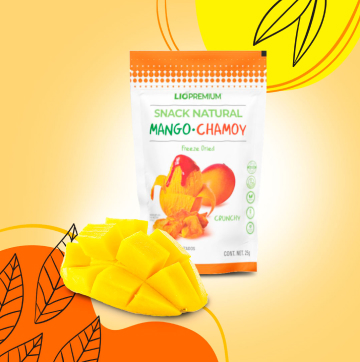Freeze-drying is a technique applied to food , vaccines or yeasts for indefinite conservation at room temperature, with its organoleptic properties intact and without microbiological risk. The problem is that it requires a lot of energy .
In English, freeze-drying is called freeze-drying (frozen-dried) and it is a term that describes very well what this organic matter conservation technique in general and food in particular. "It is about removing the water from the food by sublimation, that is, freezing and evaporation," summarizes the food technologist Miguel Angel Luruena in an article on his blog. “It is an effective method because the microorganisms that cause its deterioration (and those that cause us diseases) need Water to develop," he says.
The lyophilization It is carried out on special machines and consists of three phases:
Freeze the substance by subjecting it to low temperatures (between -50oC and -80oC) very quickly so that the size of the ice crystals is small and they do not cause cell ruptures.
make empty evaporating frozen water without first going through the liquid state. This is specifically what is known as sublimation.
apply heat frozen product to condense and become solid and dry again.
freeze drying it does not alter the physical-chemical structure of the material , nor the organoleptic properties in the case of food, but "it allows its indefinite conservation without a cold chain, with less than 15% humidity and high microbiological stability", explains the chemical engineer Juan Sebastián Ramírez Navas, from the Universidad del Valle (Cali, Colombia), in a Bibliographic review for the ReCiTeIA Magazine. “Unlike what happens in heat drying, with freeze-drying the shrinkage is minimal, the appearance, texture, flavor and aroma are not lost, they are intensified and the nutritional characteristics are maintained. It is ideal for preserve food, pharmaceutical and biological products , which should not be heated even to moderate temperatures”, he adds.

Expensive process that needs a lot of energy
"It is an expensive process, which takes time and requires a lot of energy," says Luis Hidalgo, professor and researcher at the Department of Biology and Geology at the University of Almería, who uses freeze-drying to preserve and analyze materials or active ingredients. “We use the technique to work with samples that would otherwise have to be frozen at -20oC, some at -80oC. In these cases, it is more efficient. freeze drying extends the shelf life of a perishable product at room temperature; resorting to it compensates when the alternative is refrigeration or freezing”, he qualifies.
Experts agree that the Incas invented a rudimentary freeze-drying process for the manufacture of chuño and charqui –respectively, potato and dehydrated llama meat– 200 years BC. C, taking advantage of the natural conditions that occur at the tops of the Andes: "At night food was frozen due to low temperatures and later, thanks to the heat of the sun and low atmospheric pressure, this ice was transformed directly into steam ”, explains Lurueña. The Vikings used a similar technique to preserve herring. At that time they were already optimizing the resources of nature without harming the environment .
From the middle of the 19th century, science took over, in need of solutions to preserve animal and plant tissues. In 1943, Alexander Fleming formally gave it the name freeze-drying. During World War II it was developed commercially, being used for preserve blood plasma and for the preparation of the first penicillin antibiotics. "Since the 1970s, more than 400 different foods have been freeze-dried and marketed," recalls Ramírez Navas.
Conservation of vaccines, books and documents
“In addition to the preservation of vaccines, yeasts or food, freeze-drying has another surprising application: the preservation of books and documents . The elimination of water caused by this treatment prevents the growth of microorganisms that degrade the cellulose of the paper, in addition to avoiding the deterioration caused by the water itself”, reveals Lurueña.
Luis Hidalgo, a researcher at the University of Almería, explains that there are different degrees of lyophilization, and that we can play with the variables pressure, time, temperature and sample size depending on the intensity that is necessary in each case for a good result. “The thicker a sample is, the more it will cost to get the water out of it; a large sliced banana will need more intensity than a thinly sliced banana,” he says.
Fruits that are very rich in water, such as watermelon, and some vegetables cannot be subjected to this technique, which, being so expensive, has traditionally been reserved for valuable products: coffee, aromatic herbs or spices (to preserve their aromas above all), or food for hikers, athletes or for the army.
Although snacks Freeze-dried products are gaining market share in recent years, driven by "increasing consumer demand for ready-to-eat products and prepared foods" and an increasing focus by manufacturers on improving product shelf life, according to findings from the report 'Global Freeze-Dried Food Market 2021-2027' by Expert Market Research, which forecasts the segment an 8% annual growth rate.
"If for a researcher to freeze-dry is to extract more than 95% of water, for a merchant it means: carrying ten times more merchandise, but without a refrigeration unit; 'stocks' of fruit and vegetables without conservation costs, and local added value, approximately 1,200% more," says Ramírez Navas.


